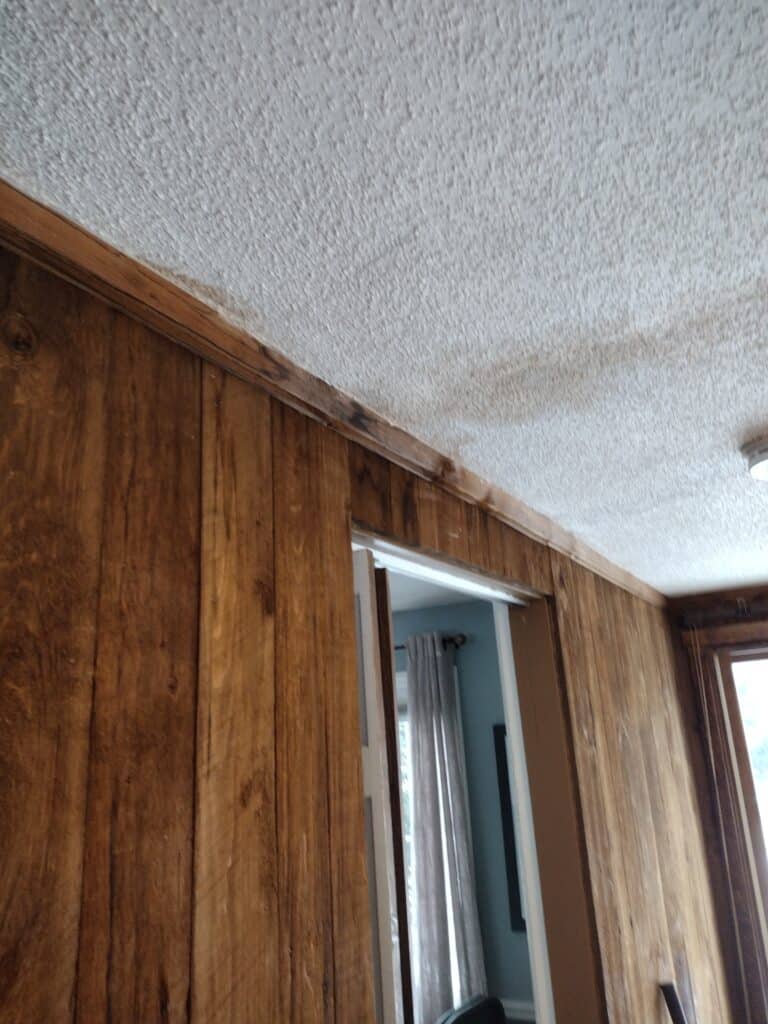Water damage is a common problem that homeowners face, especially in areas prone to heavy rain or flooding. Water damage can lead to serious problems if not addressed promptly, including mold growth and structural damage. When it comes to water damage to ceilings and drywall, there are steps you can take to repair the damage and prevent further issues.
Common Causes of Water Damage in Your Home
The most common causes of water damage in your home are roof leaks, plumbing issues, and floods. Roof leaks are often caused by damaged or missing shingles, while plumbing issues can result from burst pipes or faulty appliances. Floods are usually caused by severe weather conditions, such as heavy rainfall or hurricanes.
Is Water Damage to a Ceiling Always Serious?
Water damage to a ceiling can be serious and should be addressed as soon as possible. If left untreated, the water can seep into the drywall and create a breeding ground for mold and mildew. Additionally, the water can weaken the structure of the ceiling and lead to collapse, which can pose a significant risk to anyone in the area.
What Can Happen to Your Home If Water Damage Isn’t Fixed Right Away?
If water damage isn’t fixed right away, it can lead to significant damage to your home. In addition to mold and mildew growth, water damage can cause wood to rot, metal to rust, and paint to peel. Over time, this damage can weaken the structure of your home, leading to costly repairs and potential safety hazards.
Does a Ceiling Always Need to be Replaced After Water Damage?
In some cases, a ceiling may need to be replaced after water damage, particularly if the damage is extensive or has been left untreated for an extended period of time. However, in many cases, the damage can be repaired without the need for a full replacement.
How Do You Fix a Water-Damaged Ceiling?
To fix a water-damaged ceiling, you will need to first identify the source of the water and address the issue to prevent further damage. Once the source of the water has been addressed, you can begin repairing the damage. Fixing a water-damaged ceiling can be a daunting task, but with the right tools and knowledge, it can be done effectively. Here is a detailed list of steps to follow to fix a water-damaged ceiling:
Assess the damage: The first step in fixing a water-damaged ceiling is to assess the extent of the damage. Look for water stains, cracks, or bulging areas in the ceiling.
Turn off the water source: If the water damage is caused by a leak, turn off the water source to prevent further damage.
Remove any wet or damaged materials: Remove any wet or damaged insulation, drywall, or other materials from the ceiling. Use a utility knife or drywall saw to cut away the damaged areas.
Dry the affected area: Use a dehumidifier or fans to dry the affected area thoroughly. It is essential to ensure the area is dry to prevent mold growth.
Repair the damaged area: Once the area is dry, repair the damaged ceiling by replacing any damaged materials. Use drywall or plaster to patch the area and smooth out any rough edges. Sand the area until it is smooth and level.
Prime and paint: After the repair is complete, prime the area with a high-quality primer to ensure the new material bonds well with the old. Once the primer is dry, paint the area to match the surrounding ceiling.
Check for leaks: After completing the repair, check for any leaks or potential water damage sources. Address any issues immediately to prevent further damage.
Prevent future damage: To prevent future water damage, take steps to ensure the area is well-ventilated, and any leaks are fixed promptly.
Fixing a water-damaged ceiling can be a time-consuming process, but with proper care and attention, you can restore your ceiling to its former glory. It is essential to address water damage immediately to prevent further damage and potential health hazards from mold growth. If you are unsure of your ability to fix a water-damaged ceiling, it is always best to seek professional assistance.

